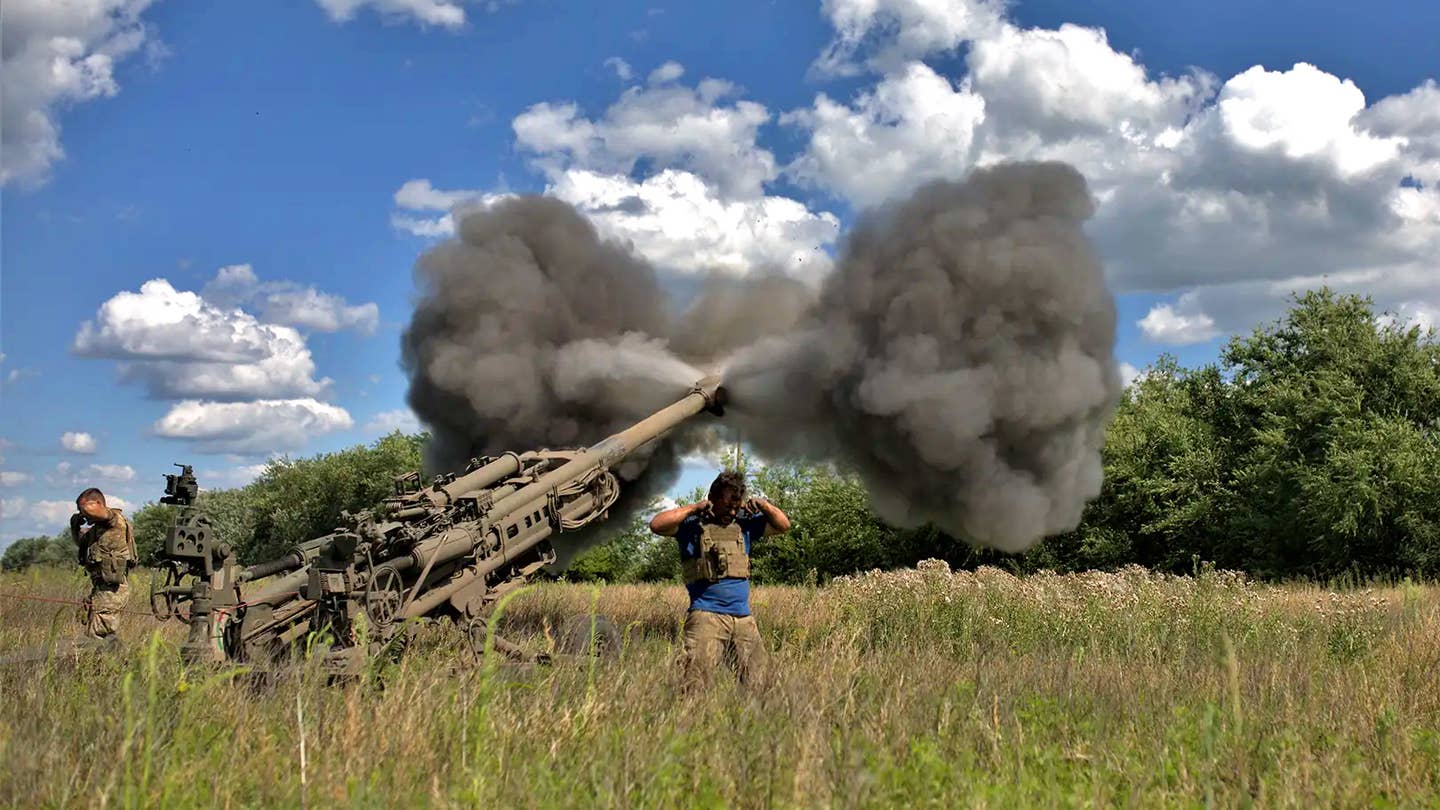HOWARD ALTMAN

Despite tens of billions of dollars of weapons poured into Ukraine and training of many of the country's troops by the U.S. and its allies, progress in the counteroffensive has been limited. So Kyiv is changing its tactics.
The New York Times on Wednesday reported that Ukrainian military commanders are now "focusing on wearing down the Russian forces with artillery and long-range missiles instead of plunging into minefields under fire." This comes as a troop surge is underway in the country’s south, "with a second wave of Western-trained forces launching mostly small-scale attacks to punch through Russian lines.”
The results, to date, have “been mixed,” the publication reported. While Ukrainian troops have retaken a few villages, “they have yet to make the kinds of sweeping gains that characterized their successes in the strategically important cities of Kherson and Kharkiv last fall. The complicated training in Western maneuvers has given the Ukrainians scant solace in the face of barrage after barrage of Russian artillery.”
The tactical change up “is a clear signal that NATO’s hopes for large advances made by Ukrainian formations armed with new weapons, new training and an injection of artillery ammunition have failed to materialize, at least for now,” the paper reported.
The situation on the battlefield “raises questions about the quality of the training the Ukrainians received from the West and about whether tens of billions of dollars’ worth of weapons, including nearly $44 billion worth from the Biden administration, have been successful in transforming the Ukrainian military into a NATO-standard fighting force.”
The Times piece includes analysis from Rob Lee, Senior Fellow at the Foreign Policy Research Institute and Michael Kofman, Senior Fellow, Carnegie Endowment and Principal Research Scientist, CNA. Kofman noted that there were challenges with how Ukrainian troops were trained to fight the NATO way. Lee said the training timetable was too compressed.
That dovetails with the findings we reported last month by Franz-Stefan Gady, a senior fellow with the Institute for International Strategic Studies and the Center for New American Security who traveled with Kofman and Lee to Ukraine recently.
Gady told us that in his view, Ukrainian troops were struggling to apply the lessons learned during the truncated training. You can read more about that in our story here.
Last week, Ukraine launched what appeared to be the main thrust of its counteroffensive. Given the challenges we've noted above, Kofman told the Times that the "counteroffensive itself hasn’t failed; it will drag on for several months into the fall.”
While the U.S. has repeatedly promised to back Ukraine for as long as it takes, it remains to be seen just how long the pace of support and donations continues. That could be an increasing concern as the Pentagon is now sending Taiwan military hardware in Presidential Drawdown packages like the ones provided to Kyiv.
We will continue to monitor this situation and provide updates as warranted.
Before we head into the latest news from Ukraine, The War Zone readers can catch up on our previous rolling coverage of the war here.
On the battlefield, there have been no major ground gains by either side. Ukraine continues to push its counteroffensive in Zaporizhzhia Oblast and the Donbas and Russian troops are fighting an offensive of their own trying to regain territory and sap Ukrainian resources.
Here are some key takeaways from the latest Institute for the Study of War assessment:
The Russian MoD continues to posture Russian Chief of the General Staff Army General Valery Gerasimov as an effective and involved overall theater commander in Ukraine.
Ukrainian forces continued counteroffensive operations on at least three sectors of the front and reportedly advanced near Bakhmut on August 1.
Russian forces conducted offensive operations along the Kupyansk-Svatove-Kreminna line, near Bakhmut, on the Avdiivka-Donetsk City line, in the Donetsk-Zaporizhia Oblast border area, and in western Zaporizhia Oblast on August 1 and made advances in certain areas.
Ukrainian forces continued counteroffensive operations on at least three sectors of the front on August 1 and advanced near Kreminna and Bakhmut.
The Economist took a deep dive into Ukraine’s counteroffensive, spending times with troops in Zaporizhzhia Oblast.
“Ukraine’s push south is proceeding painfully slowly. Russian troops have prepared formidable defenses which the Ukrainians are finding hard to breach,” the publication reported. ”These include drones transmitting live pictures back to their operators, minefields and loitering munitions. They have hugely increased the challenges that Ukraine’s soldiers are facing compared with last year.”
“The worst are tripwires,” says Pole, one of the soldiers the Economist interviewed, “which you cannot see at night, and set off a whole string of connected mines.”
Poland will deploy more troops the border with Belarus after it accused Minsk of violating its airspace, according to CNN, as tensions increase between the NATO member and Vladimir Putin’s vassal state.
On Tuesday, Poland said two Belarusian helicopters allegedly violated it airspace during training exercises. The Belarusian defense ministry vehemently denied and dismissed that accusation as “far-fetched.”
All this comes amid increased activity near a thin strip of land between Poland and Lithuania, known as the Suwalki gap or corridor. Troops from Yevgeny Prigozin's Wagner mercenary group are moving toward there in an apparent attempt to increase pressure on NATO and EU members, CNN reported.
Last week, Polish Prime Minister Mateusz Morawiecki said Wagner mercenaries were heading towards the Suwalki corridor via Grodno, a city in western Belarus, in a situation that is “becoming even more dangerous” as Russian-allied forces attempt to increase their presence near the NATO border.
No comments:
Post a Comment